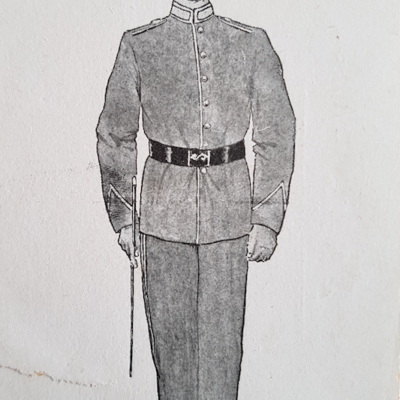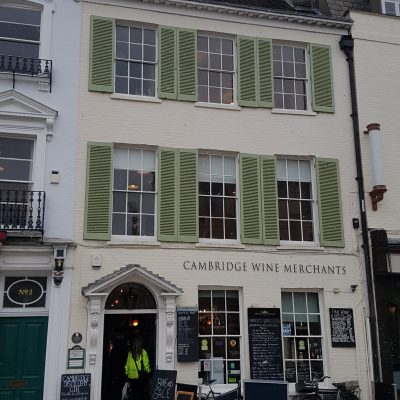Search by topic
- archaeology
- Building of Local Interest
- chapel
- charity
- church
- crime
- dressmaker
- fire
- Great Eastern Railway
- Listed building
- Mapping Relief
- medieval
- oral history
- poverty
- Public House
- Religious House
- Roman
- scholar
- school
- Then and Now
- tudor
- women
- work
- world war one
- world war two
Search by text

22 King’s Parade
History of 22 King's Parade
Building dates to the 17th cent. The staircase bay was probably added and the south wall faced in brick c. 1730. The shop fronts to the N and W are 19th cent. The 18th cent. rainwater downpipes has a moulded head. There is an 18th cent oak staircase and a panelled stone fireplace of c. 1700.
1881
Stephen C Barnes, 66, tailor, b Newcastle
Mary A, 63, b Birmingham
Mary J Neville, step daughter, 29, teacher of dancing, b Worcs
Frederic J Neville, grandson, 10, b Cambridge
Henry W Neville, grandson, 8, b Cambridge
Florence Neville, granddaughter, 7, b Cambridge
Percy Neville, grandson, 4, b Cambridge
Frances Giddens, 20, cook, b Mepal
Esther Parsons, 23, housemaid, b Mepal
Samuel M Fox, boarder, 25, graduate, b Tottenham
Thomas P Jacomb, 21, BA and LLB of Cambridge, b Kent
1913
Ryder & Amies, tailors, robe makers, hosiers, hatters, shirtmaker and clerical outfitters
Ryder and Amies used to occupy 21 King’s Parade as well. The business was started in 1904. They used to have a workroom on Peas Hill for their tailoring. There used to be a Conservative Club on the first floor.
1935
Ryder and Amies took over tradition of sporting notices from Masters next door when they moved.
2018
Ryder & Amies, tailors & robe makers
Contribute
Do you have any information about the people or places in this article? If so, then please let us know using the Contact page or by emailing capturingcambridge@
License
This work is licensed under CC BY-NC-SA 4.0





















